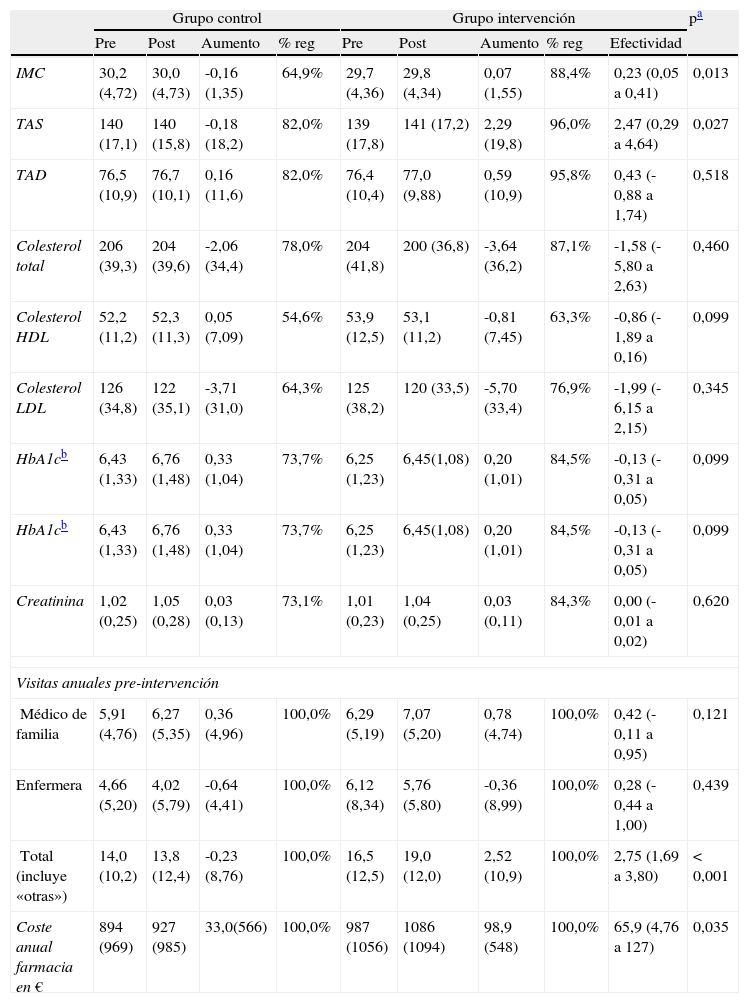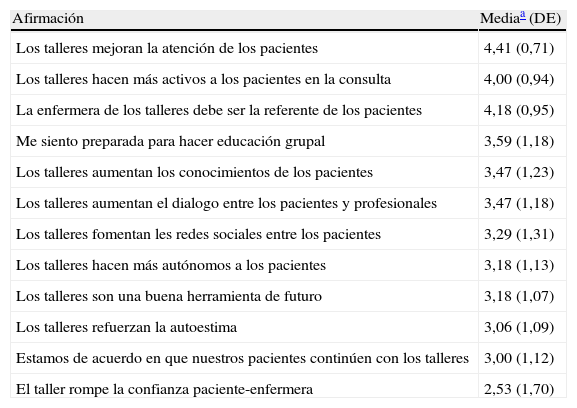Comparar una intervención educativa grupal frente a una atención individual para mejorar variables clínicas y de gestión, en pacientes con riesgo cardiovascular (RCV) atendidos en Atención Primaria (AP).
MétodoEstudio experimental controlado aleatorizado realizado en 7 centros de AP de Barcelona. Se seleccionaron 2.127 pacientes incluidos en el protocolo de patologías crónicas de los centros. El grupo intervención (GI) durante un año recibió atención educativa en cuatro talleres grupales conducidos por sus enfermeras referentes. Las variables medidas en el GI y el grupo control (GC) al inicio del estudio y tres meses tras la intervención fueron clínicas y de gestión (número visitas, gasto farmacéutico, dedicación/tiempo enfermería). Se analizaron los resultados pre-post-intervención y entre GI y GC.
ResultadosEl GI inicial (n=672) al final del seguimiento perdió 144 pacientes que no cumplieron la totalidad de sesiones. El GC no sufrió pérdidas (n=824). Al final del seguimiento no hubo diferencias significativas en las variables clínicas. El número de visitas y el gasto farmacéutico se incrementó en el GI. Sin embargo, la dedicación anual enfermera/paciente/año fue de 39,59 minutos en el GI y de 60 minutos en el GC.
ConclusionesEl control grupal en AP de pacientes con RCV ahorra tiempo al colectivo de enfermería respecto al control individual, sin perjuicio del grado de control del paciente. A pesar de ello, son necesarios más estudios para definir mejor que tipo de paciente es más susceptible de abordar el control de su enfermedad cardiovascular mediante talleres grupales y si esta reducción repercute en el consumo de otros recursos asistenciales.
To compare an educational group intervention with individual care to improve clinical and management variables among patients with cardiovascular risk (CVR) in community health care (PC).
MethodsA randomised controlled experimental study was developed in 7 PC centres of Barcelona (Spain). A total of 2,127 patients included in the chronic diseases protocol of the centres were selected. The intervention group (IG) attended four educative workshops led by their nurses during one year. Clinical and management variables (number of visits, pharmaceutical expenditure, nurse time consumption) were measured at baseline and 3 months after the intervention in the IG and in the control group (CG). Pre-post-intervention and IG vs. CG differences were analysed.
ResultsAmong the 672 patients belonging to the IG, 144 were lost due to failing to attend the workshops. CG (n=824) had no withdrawals. At the end of follow-up there were no significant differences between their clinical variables. The number of visits and pharmaceutical expenditure increased in the IG. However, the annual dedication of nurses per patient per year was 39.59minutes in the IG and 60minutes in the CG.
ConclusionsNurse group control of patients with CVR in PC saves nurse-time compared with the usual individual visits. However, further studies are needed to better define what type of patient that is more susceptible to follow cardiovascular control through group workshops and whether this time-saving is related to the use of other health resources.
Artículo
Comprando el artículo el PDF del mismo podrá ser descargado
Precio 19,34 €
Comprar ahora












